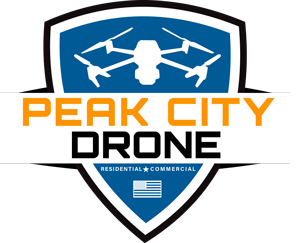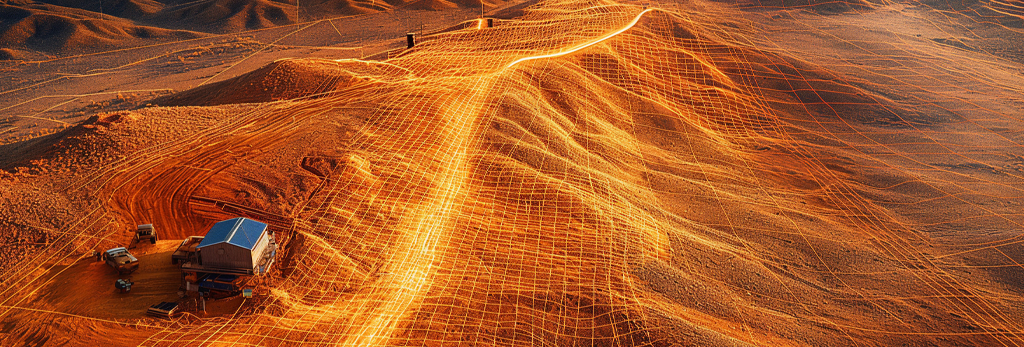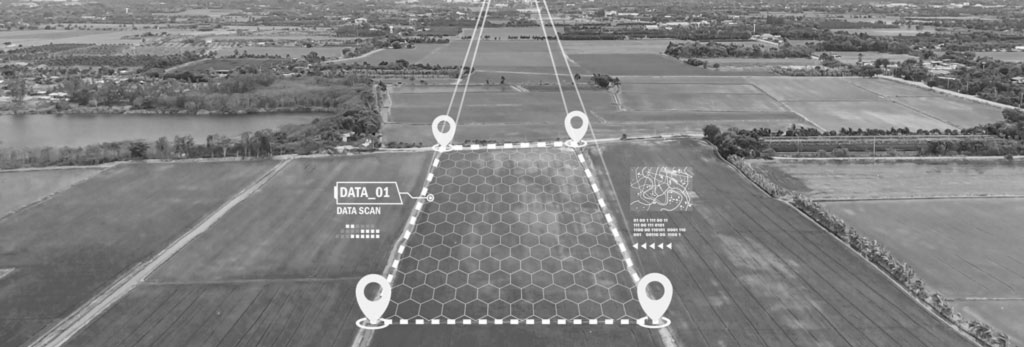LiDAR and Drone Technology: Mapping the World in 3D
LiDAR-equipped drones are revolutionizing how we map and analyze terrain. Combining precision laser scanning with aerial mobility, these advanced systems deliver powerful data across industries such as construction, forestry, archaeology, and environmental monitoring.
What Is LiDAR?
LiDAR (Light Detection and Ranging) is a remote sensing technology that uses laser light to measure distances. It sends out rapid pulses of laser beams—sometimes over 100,000 per second—and measures how long each pulse takes to bounce back from surfaces.
How LiDAR Works
A LiDAR system consists of:
- A laser scanner to emit light pulses
- GPS for accurate geolocation
- Inertial Measurement Unit (IMU) for orientation tracking
The result is a dense “point cloud” representing the scanned environment in 3D, even through foliage or semi-obstructed terrain.
LiDAR vs. Photogrammetry
While both LiDAR and drone-based photogrammetry create 3D models, they have key differences:
- Photogrammetry uses overlapping photos and algorithms to construct models from visual data.
- LiDAR actively measures distance using lasers, offering higher accuracy and penetration through vegetation.
For applications requiring extreme detail, such as corridor mapping or forestry, LiDAR is the preferred tool.
How LiDAR Is Used with Drones
Attaching a LiDAR sensor to a drone adds the advantage of rapid deployment and aerial reach. These drone-LiDAR systems can scan large or difficult terrains quickly, safely, and with minimal human labor.
Core Applications of Drone-Based LiDAR
1. Topographic Mapping and Surveying
Surveyors use drone-mounted LiDAR for:
- Creating accurate Digital Elevation Models (DEMs)
- Mapping flood zones, roads, and infrastructure
- Measuring volumes for excavation or landfills
Unlike ground-based surveys, drones with LiDAR cover large areas in hours instead of days—without compromising precision.
2. Forestry and Vegetation Analysis
LiDAR can penetrate dense tree canopies, making it an essential tool in forestry:
- Measuring tree height, canopy structure, and biomass
- Identifying disease or deforestation patterns
- Mapping inaccessible forested areas
This data supports forest management, conservation efforts, and carbon accounting.
3. Construction and Civil Engineering
In construction, LiDAR-equipped drones provide:
- Progress tracking with high-resolution elevation data
- Earthwork volume calculations
- Pre-design site analysis and grading
Contractors use this information for accurate planning, minimizing costly on-site errors.
4. Mining and Resource Management
Mining operations rely on LiDAR for:
- Measuring pit depths and stockpile volumes
- Monitoring terrain shifts or erosion
- Creating 3D site maps for safety compliance
Drone-LiDAR solutions reduce the need for manual surveys in hazardous areas.
5. Archaeology and Heritage Preservation
LiDAR has become a revolutionary tool for archaeologists:
- Uncovering ancient ruins hidden beneath vegetation
- Mapping terrain without disturbing fragile sites
- Preserving cultural landscapes digitally
LiDAR has led to the discovery of lost cities, temples, and road networks in places like Central America and Southeast Asia.
6. Environmental and Coastal Monitoring
Agencies use drone-LiDAR to:
- Track shoreline changes and erosion
- Analyze wetlands and floodplains
- Support habitat restoration planning
This geospatial insight helps manage climate risk and promote sustainability.
Benefits of Using Drones with LiDAR
- High Accuracy: Centimeter-level precision in elevation and distance measurements
- Foliage Penetration: Ability to scan ground beneath trees or bushes
- Rapid Data Collection: Survey hundreds of acres in a single flight
- Cost-Efficiency: Reduces labor and equipment needed for traditional surveying
- Safety: Keeps surveyors out of dangerous or inaccessible areas
Challenges and Considerations
While powerful, LiDAR drone systems come with some considerations:
- Cost: LiDAR sensors and payloads are more expensive than standard cameras
- Processing Requirements: Large point cloud datasets require specialized software and computing power
- Regulatory Compliance: Drone flight regulations may limit where and how data can be collected
Careful planning and professional expertise ensure the best results.
LiDAR Drone Workflow
A typical project using a LiDAR drone includes:
- Flight Planning: Define area, altitude, and scan pattern using mission software
- Data Collection: Conduct automated drone flight and record LiDAR/GPS data
- Post-Processing: Use software to create georeferenced point clouds and models
- Analysis & Reporting: Extract elevation data, terrain contours, and other insights
Popular software tools for LiDAR post-processing include Pix4D, TerraSolid, and LAStools.
The Future of Drone-Based LiDAR
As LiDAR sensors become smaller, lighter, and more affordable, expect to see broader adoption across sectors. Advances in AI and machine learning will allow for automatic feature detection in point clouds—further streamlining data analysis.
Upcoming trends include:
- Urban planning with real-time 3D mapping
- Autonomous drone flights with AI-driven terrain recognition
- LiDAR + RGB fusion for photorealistic 3D reconstructions
These innovations will push the boundaries of what’s possible with remote sensing.
Conclusion: Mapping the Future with LiDAR Drones
Drones equipped with LiDAR sensors are reshaping how we understand and manage the physical world. From precision mapping to environmental stewardship, their impact is vast and growing. As technology continues to advance, LiDAR drones will be central to the next generation of geospatial intelligence.
Whether you’re in construction, conservation, or research, drone-based LiDAR offers an unparalleled view from above—accurate, efficient, and powerful.
The Evolution of Drones: From Concept to Everyday Technology
Drones, also known as unmanned aerial vehicles (UAVs), have transformed from futuristic concepts to practical tools that are reshaping industries. Today, drones are used in everything from agriculture to filmmaking, real estate to emergency response. Their rise is a compelling story of innovation, accessibility, and technological advancement.
What Is a Drone?
At its core, a drone is an aircraft without a human pilot on board. Operated remotely or autonomously through software and sensors, drones can fly in various environments and carry out specific tasks, often with high precision.
A Brief History of Drones
Early Innovations
- 1935: The British developed the DH.82B Queen Bee, a radio-controlled aircraft used for target practice.
- 1950s–70s: Technological advancements in radio communication and flight control laid the groundwork for UAV development.
- 1990s: GPS integration and miniaturized electronics sparked a wave of interest in autonomous flight.
The real tipping point came in the early 2010s when drones became affordable for hobbyists, entrepreneurs, and commercial users alike.
How Drone Technology Works
The technology behind drones involves a combination of sensors, GPS, flight control systems, and wireless communication. Depending on the model and its purpose, drones can be incredibly sophisticated or relatively simple.
Key Drone Components
Propulsion System
Most consumer drones use electric motors and propellers. The number of rotors (typically four, six, or eight) helps determine the drone’s stability and lifting power.
Flight Controller
The flight controller is the drone’s brain. It processes data from onboard sensors and transmits control signals to keep the drone stable and responsive.
GPS and Navigation
Modern drones are often equipped with Global Positioning Systems (GPS) that allow for precise navigation, hover stability, and return-to-home functionality.
Camera and Imaging Technology
Drones equipped with HD or 4K cameras can capture breathtaking aerial images. More advanced models include thermal imaging or multispectral sensors for specialized uses.
Obstacle Avoidance Sensors
Using ultrasonic, infrared, or vision-based sensors, drones can detect and avoid obstacles, making them safer and more autonomous.
Modern Uses of Drones (Non-Military)
The versatility of drones has opened up a range of applications across industries. Here’s a look at some of the most impactful ways drones are used today.
Drones in Agriculture
One of the fastest-growing sectors for drone use is precision agriculture. Farmers use drones to:
- Monitor crop health using multispectral imagery
- Map fields and analyze soil data
- Optimize irrigation and fertilizer application
- Survey livestock or fence lines
This data-driven approach enhances yield, reduces waste, and promotes sustainable farming practices.
Drones in Real Estate and Construction
High-resolution aerial imagery gives real estate professionals a powerful tool to showcase properties from above. For construction teams, drones are used to:
- Monitor job site progress
- Generate 3D maps and topographic models
- Conduct safety inspections in hard-to-reach areas
Drones save time and money while improving accuracy and safety.
Drones in Environmental Monitoring
Drones have become essential tools for environmental science and conservation:
- Tracking wildlife migration patterns
- Surveying forests and monitoring deforestation
- Assessing coastal erosion and wetland health
- Collecting data in hard-to-reach ecosystems like rainforests or volcanoes
They allow scientists to gather accurate data with minimal environmental disruption.
Drones in Emergency Response and Public Safety
Fire departments, search-and-rescue teams, and disaster relief organizations use drones for their speed and agility in emergencies:
- Locating missing persons in remote areas
- Delivering medical supplies or life jackets
- Mapping disaster zones for quicker response
- Monitoring wildfires from the air
These life-saving applications demonstrate drones’ growing value in public service.
Drones in Media and Entertainment
Aerial shots once reserved for helicopters are now widely available thanks to drones:
- Film and TV production benefit from dynamic, cinematic footage
- Sports coverage is enhanced with sweeping aerial angles
- Social media content creators use drones to tell compelling visual stories
The low cost and accessibility of drones have democratized professional-level videography.
Drones in Delivery and Logistics
Companies are exploring drone delivery systems for lightweight packages. While still in testing stages in many places, drone deliveries can:
- Reduce last-mile delivery times
- Reach rural or hard-to-access areas
- Decrease carbon emissions compared to traditional delivery vehicles
Brands like Amazon, UPS, and Zipline are already piloting drone delivery networks globally.
The Future of Drones
As drone technology matures, we can expect increased automation, AI-driven flight planning, and expanded airspace integration. Innovations in battery life, payload capacity, and communication networks (like 5G) will further broaden the scope of drone applications.
Regulations and Safety
Government agencies, such as the FAA (Federal Aviation Administration) in the United States, are working to balance innovation with public safety. Current regulations for drone operators include:
- Registering drones above a certain weight
- Flying within visual line of sight
- Avoiding restricted airspace
- Completing certification for commercial drone use (e.g., FAA Part 107 license)
Following these rules helps ensure responsible drone use.
Why Drones Matter
Drones are more than just gadgets; they’re tools that are reshaping how we explore, analyze, and interact with the world. Their non-military applications—ranging from sustainable farming to environmental preservation and media creation—highlight the positive impact drones are having on modern life.
As the technology continues to evolve, drones will likely become even more integrated into daily operations across numerous sectors. The sky is no longer the limit—it’s just the beginning.


